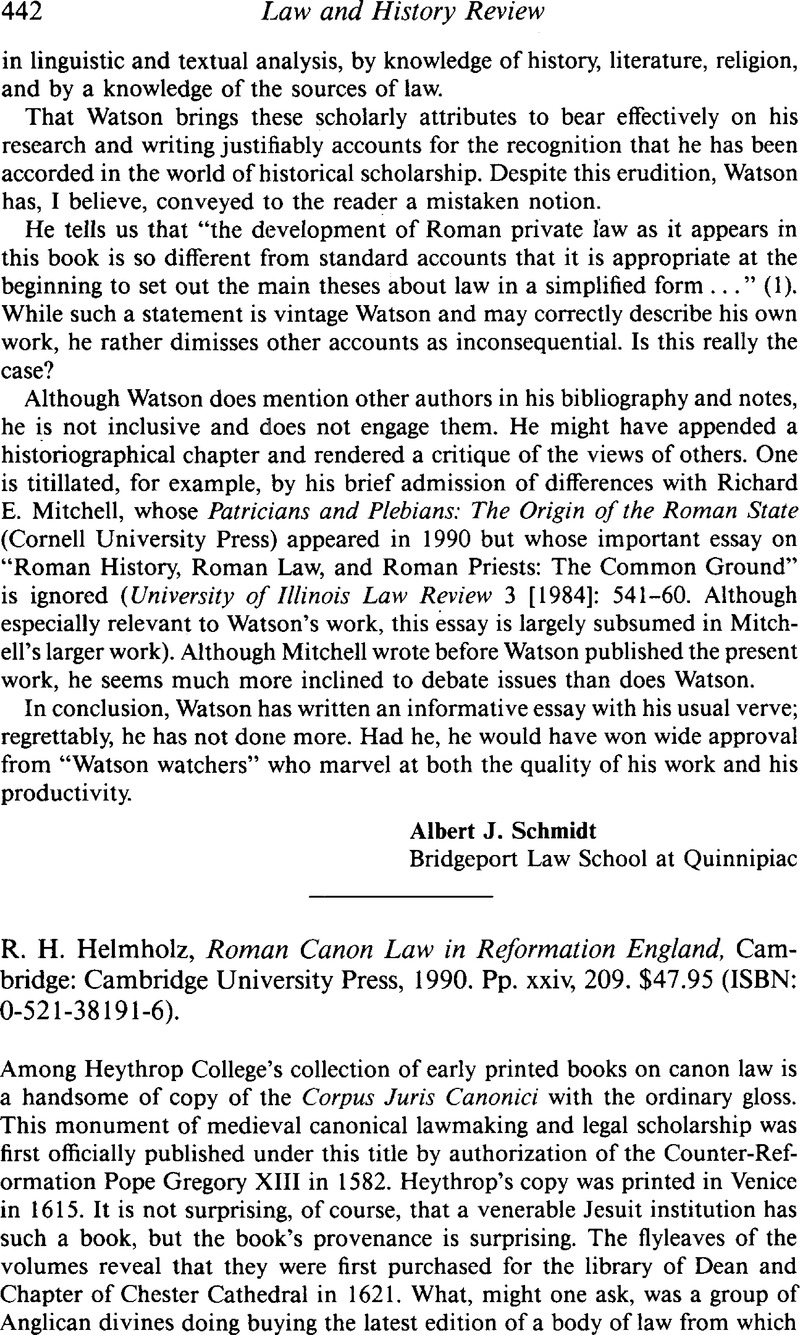No CrossRef data available.
Published online by Cambridge University Press: 28 October 2011

1. Maitland, F. W., Roman Canon Law in the Church of England (London, 1898, repr. New York: Burt Franklin, 1968).Google Scholar The polemical purposes of Maitland's work make it likely that the “Roman” of Maitland's title was to be taken in connection with the Roman pontiff, the pope, rather than Roman law, as Helmholz takes it (152).
2. Helmholz, 123; Maitland, Roman Canon Law, 96.
3. See, e.g., Kagan, R., Lawyers and Litigants in Golden Age Castile, 1500–1700 (Chapel Hill: University of North Carolina Press, 1981), 3–20.Google Scholar
4. See generally Smith, D. M., A Guide to the Archive Collections in the Borthwick Institute of Historical Research, Borthwick Texts and Calendars, 1 (York: University of York, 1973), 57.Google Scholar
5. See, e.g., Dickens, A. G., The English Reformation, 2d ed. (University Park, Penn.: Pennsylvania State University Press, 1991), 339–96.Google Scholar But see pp. 113–16 for Helmholz's interesting suggestions about the possible effect of the absence of the internal forum on ex officio prosecutions.
6. Helmholz, 30–31; Baker, J. H., “Introduction,” The Reports of Sir John Spelman, Selden Society, 94 (London: The Selden Society, 1977), 2:66–67.Google Scholar
7. Such a move would, of course, have encountered the argument that the ecclesiastical courts were no longer subject to a “foreign power,” but despite this argument the common law courts made efforts in the early seventeenth century to subject those who had recourse to the Chancery to actions of praemunire. See Holdsworth, W., A History of English Law, 7th ed. (London: Methuen, 1966), 1:461–63.Google Scholar
8. There are occasional lapses, but they are very few: On p. 38, “Edward IV” should be “Edward VI.” On p. 142, we learn that an English civilian's opinions were different from Continental consilia in that “the writer took no personal part in the cause from which the question sprung.” I'm not sure I know what that means. Throughout the book the word “convented” is used to mean “cited” or “summoned” before an ecclesiastical tribunal. Though the usage has some contemporary support (e.g., Stat., 2&3 Edw. VI, c. 13. § 13), it required a consultation with the unabridged Oxford Dictionary.
9. In Jenkins, D., ed., Legal History Studies (Cardiff: University of Wales Press, 1975), 1–27Google Scholar, reprinted in Baker, J. H., The Legal Profession and the Common Law (London: Hambledon Press, 1986), 435–60.Google Scholar